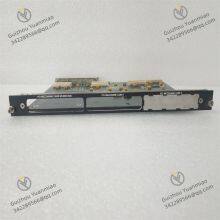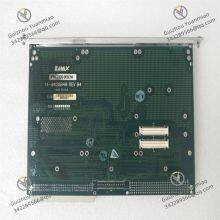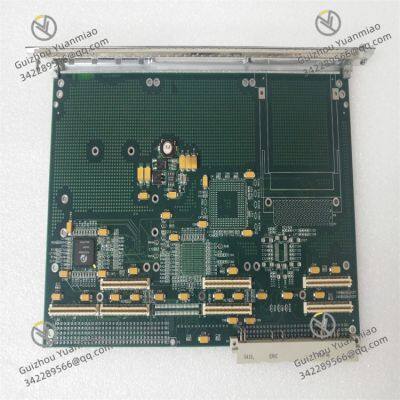Material
Other, Global universal model
Condition
Other, Global universal model
Task
Other, Global universal model
Mathematical Model
Other, Global universal model
Signal
Other, Global universal model
Customized
Non-Customized
Structure
Other, Global universal model
Supply voltage
24VDC
Operating temperature
-40°C to +85°C
I. Overview
RAMIX PMC237C-008EMI is a high-performance PMC interface module, which is widely used in fields with extremely high requirements for electromagnetic compatibility such as industrial automation, aerospace, national defense and military industry. This module not only has strong data processing and transmission capabilities, but also ensures stable and reliable operation in strong electromagnetic interference environments by virtue of its excellent electromagnetic interference (EMI) suppression performance. It provides a solid guarantee for the normal operation of various precision electronic systems and is an indispensable key component in the field of modern industry and high-end equipment.

II. Technical Parameters
Interface Type: Adopts the standard PMC interface, complies with the IEEE 1386.1 specification, has good versatility and compatibility, and can realize seamless connection with various host devices supporting the PMC standard, ensuring the stability and efficiency of data transmission.
Channel Configuration: Equipped with 8 independent signal channels, each of which can independently perform signal acquisition and processing, and supports parallel data transmission, which greatly improves the data processing efficiency of the module and meets the needs of multi-task concurrent processing.
Data Transmission Rate: The maximum data transmission rate of a single channel can reach 100Mbps, and the total bandwidth can meet the requirements of large-scale real-time data transmission, effectively reducing data transmission delay and ensuring the strict requirements of the system for real-time performance.
Working Voltage: Supports +3.3V and +5V dual-voltage power supply, with a voltage allowable fluctuation range of ±5%, which can adapt to different power supply environments and ensure that the module can still work stably when the voltage fluctuates slightly.
Electromagnetic Compatibility: Passed strict electromagnetic compatibility tests, with radiation emission complying with EN 55022 Class A standard and immunity complying with EN 55024 standard. It has excellent electromagnetic interference suppression capability and can work normally in strong electromagnetic environments.
Working Environment: The operating temperature range is -40℃ to +85℃, which can adapt to extreme high and low temperature environments; the relative humidity is 5% - 95% (non-condensing), with good moisture resistance; the vibration resistance is 10 - 2000Hz, with an acceleration of 15g, and the impact resistance is 50g (11ms pulse), which can maintain stable operation in harsh physical environments.
Power Consumption: Under typical working conditions, the power consumption does not exceed 15W, with low energy consumption, which is conducive to reducing the overall power consumption of the system and lowering the heat dissipation pressure.

III. Functional Features
Enhanced Electromagnetic Interference Suppression: Adopts multiple electromagnetic interference suppression technologies, including metal shielding shell, filter circuit design and signal isolation measures, etc., which can effectively block the impact of external electromagnetic interference on the internal circuit of the module, and at the same time reduce the electromagnetic radiation of the module itself to the outside, ensuring the electromagnetic compatibility between the module and surrounding equipment.
High-Precision Signal Processing: Equipped with high-performance signal conditioning circuits and A/D converters, it can accurately amplify, filter and convert input signals, capture subtle changes of weak signals, ensure the precision and accuracy of signal acquisition, and provide reliable data basis for system decision-making.
Flexible Working Modes: Supports switching between multiple working modes, which can be configured as interrupt triggering, DMA transmission or query mode according to actual application needs, meeting the requirements of data transmission and processing in different scenarios, and improving the adaptability and flexibility of the module.
Comprehensive Self-Diagnosis Function: Built-in real-time monitoring circuit, which can continuously monitor key parameters such as the module's power supply voltage, working temperature and channel status. When an abnormal situation is detected, it can promptly send an alarm signal and record fault information, facilitating maintenance personnel to quickly locate and eliminate faults, and improving the reliability and maintainability of the system.
Modular Design: Adopts a modular architecture, with each functional unit being relatively independent, which is convenient for later maintenance and upgrading. If a functional unit fails, it can be replaced individually, reducing maintenance costs and time costs, and also providing convenience for the expansion of module functions.

IV. Operation Guide
Installation Process
Before installation, ensure that all relevant equipment is powered off, and wear an anti-static wristband to avoid static electricity damaging the internal components of the module.
Carefully check whether the installation interface of the module matches the PMC slot of the host device. After confirmation, align the module with the slot smoothly, push it in slowly along the guide rail until the module is completely engaged with the slot to ensure a firm connection.
Fix the module on the mounting frame of the host device with screws to prevent the module from loosening due to vibration during the operation of the device, which may affect data transmission or cause interface damage.
After installation, check the fixing situation and interface connection status of the module, and power on the device only after confirming that there is no abnormality.
Parameter Configuration
Connect the host device to the module, start the supporting configuration software, and establish a communication connection by automatically identifying the module model and connection port through the software.
Enter the parameter configuration interface, and set parameters such as the signal type (e.g., analog quantity, digital quantity), sampling rate, and triggering mode of each channel according to actual application needs. For electromagnetic sensitive scenarios, the enhanced anti-interference mode of the module can be enabled.
After configuration, click the "Save Parameters" button to write the configuration information into the non-volatile memory of the module, ensuring that the module can automatically load the configuration parameters when it is started next time.
Perform parameter verification, send test signals through the software, check whether the output of the module meets the expected configuration, and if there is a deviation, adjust the parameters in time until they meet the requirements.
Operation
Start the host system and related application software, and the module will automatically enter the working state, collecting and transmitting data in real time.
During operation, real-time view the working status of each channel, data transmission situation, as well as parameters such as the module's temperature and voltage through the software monitoring interface to ensure that the module is running normally.
If it is necessary to pause or stop the module, control commands can be sent through the software to avoid damage to the module caused by direct power-off. When switching module functions, follow the steps prompted by the software to ensure a smooth and reliable switching process.














































